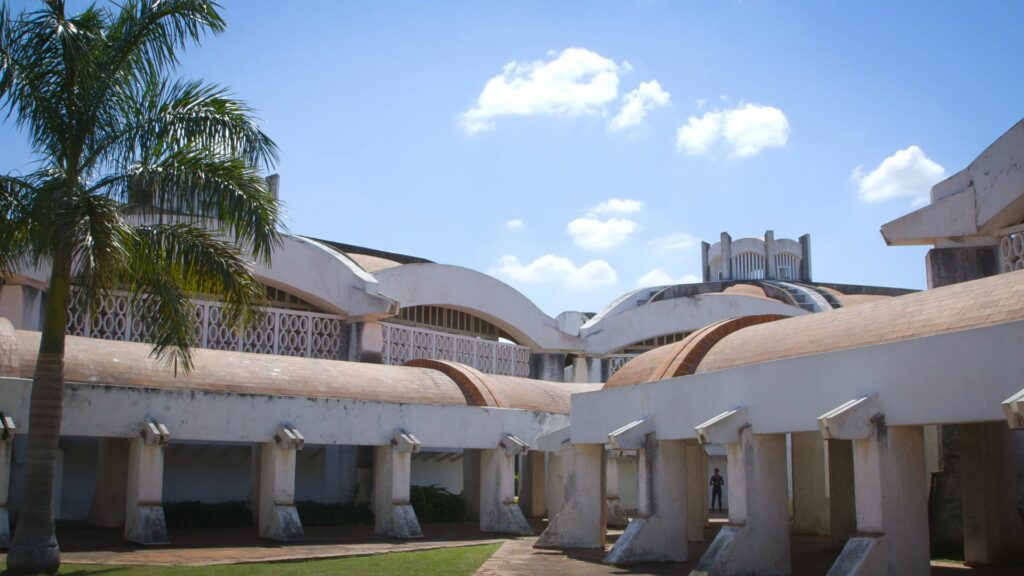
Mary Taylor: Envisioned by Fidel Castro and Che Guevara as an important revolutionary institution, The National School of the Arts (la ENA, Escuelas Nationales De Arte- also known as “the City of Arts”) was founded in March 1962 in the Cubanacan neighborhood of Havana. The campus, with five buildings set on the grounds of what was once the exclusive golf course of the Havana Country Club, was designed by architects Ricardo Porro, Roberto Gottardi and Vittorio Garatti. UNESCO lists this compound as among the most outstanding examples of the Modernist Movement in Cuba. While your beautifully shot and edited film la ENA, which also features an incredible soundtrack, captures these unique structures built for this purpose, your interest is in documenting it as a cultural and educational institution. As someone who has researched the role of cultural institutions of state socialist Hungary in civic cultivation and is also an editor of LeftEast, I have many questions. First, can you speak a bit about yourself? What led you to make this film? What was the process of making it like?

Amilcar Navarro: I’m a huge Jazz listener and I was invited to a concert in Brooklyn with Bobby Carcasess. He was the pianist of Columna B, and through that concert I met a whole generation of Cuban musicians who now live in NYC. We became friends and I met a whole universe of artists who all had been students at ISA. I just felt there must be something special about the school and I started to do some research. Of course the buildings themselves are remarkable, and the backstory of Fidel and Che’s desire to manufacture a “new man” via state institutions was interesting as well as honest. At the time I was watching a lot of Fredrick Wiseman films and his work is all about institutions; the people who run them and the people who are shaped by them. So that was a point of inspiration. Making the film was pure luck. It was impossible to get official permission. I had a green light and then it was cancelled due to student protests over the food being served, so the state didn’t want cameras inside the school. Just as it was cancelled I met a producer in Havana after selling a camera to a Cuban who lives in NYC. He suggested I speak with his friend who was a producer on the film Juan of the Dead and he had the state contacts to get a green light for the film. It was tough. It’s a very controlled society when trying to make a film about a state institution. It was a great experience but not something I would do again. It is a headache dealing with Soviet-style bureaucracy with its “you can film this, but not that.” I would have a shoot day canceled the night before, and of course I needed to get each professor to agree to let me into each classroom. Not a fun process.
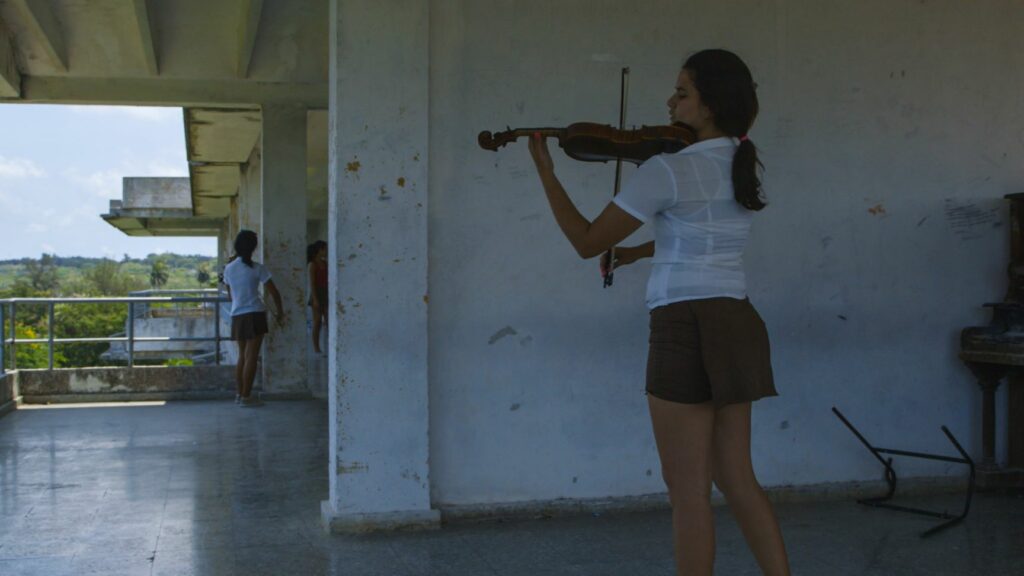
MT: La ENA was founded as a training institute for the newly sovereign Cuban nation and it recruited youth from all social classes and regions. Selection of candidates is based on ability and talent, and admission gained after a series of very rigorous tests. In 1976 the ISA (Instituto Superior de Arte) was founded as part of la ENA specifically for the university education of its students. In the beginning, you have said, the art forms emphasized at la ENA were Eurocentric. There were, I understand, four specialties: visual arts, ballet, music, and drama. Other forms were added at later dates: Modern and folk dance (1965), Circus (1977) and musical spectacle (1993). In the film we see ballet and classical music alongside Rumba and Son. How did these popular forms made their way into the curriculum? Who pushed for it? When did it happen?
AN: I’m not really sure what the backstory of incorporating Cuban art forms into the curriculum is. It was a bourgeois revolution and the Party saw jazz, Cuban popular music and so called folk arts as regressive and vulgar, but how they got in past the gatekeepers isn’t something I know.
MT: My knowledge of the case of folk music and dance in Hungary makes me very curious about this. In the case of Hungary the elevation of folk arts is tied with various forms of struggle that took place within state socialist institutions. Regarding Cuba, I learned a lot from Yvonne Daniels’ work on the official promotion of Rumba. Her 1995 book Rumba: Dance and Social Change in Contemporary Cuba focused on the elevation of the Rumba since 1979. Associated with dark-skinned (and usually poorer) Cubans, Rumba was elevated to one of the national dance/music forms and space was made for it on stage via the Ministry of Culture and the institutions and performance venues it oversees. Daniels looks at the interaction of this phenomenon with the ongoing “everyday’ folk practices of Rumba by Afrodescendent people. I don’t recall if she makes reference to la ENA. I’m going to have to get a copy of the book to read again. In Hungary the “high arts” and the folk (and “amateur”) arts tended to be handled through different institutional arrangements, but there was a push by certain groups to get folk music and folk dance in the curriculum at the “high” dance and music schools, with some success.
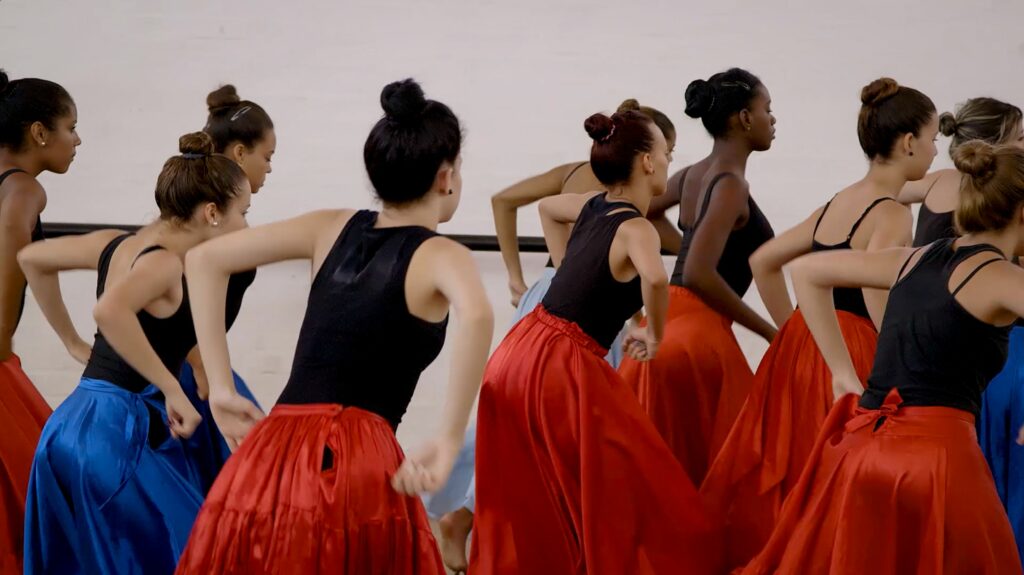
La ENA is said to be the main source of professional artists in the country, and serves 47 subsidiaries in all provinces. What does it mean to be a professional musician in Cuba today? Are the musicians that tourists encounter on the streets also trained at la ENA? What other opportunities for arts education exist in Cuba and what is the relationship of popular art to state institutions?
AN: The not so famous artists that tourists see on the street are not usually ENA/ISA graduates. The great Salsa Orchestras will have young graduates incorporated into the band but not always. The rumberos, the masters of the drum, are often developed from birth at home but aren’t always graduates- so it is a mix. The current generation of Jazz and classical musicians as well as dancers of all disciplines are mostly graduates of the art system. As for visual arts, “the plastic arts” are very much a La ENA product. However, Cuba has produced some rock stars, most notably Luis Manuel Otero, outside of the school system.
MT: We are having this conversation at a critical moment in Cuban history. You can imagine that LeftEast readers have a great interest in what is happening is Cuba, given how the last 30 years of so-called transition have played out in formerly state socialist Eastern Europe.
My understanding is that the recent wave of protests we saw this summer was not entirely unexpected. According to Black Rose in Miami, the protests began on July 10th with spontaneous street action in Palma Soriano, which is located in Santiago de Cuba. Experiencing increasing blackouts, food shortages, and a Covid-19 related public health crisis, people marched in the streets with pots and pans, protesting in a “cacerolazo”. By the morning of July 11th, a wave of rebellion had been sparked across the island, in the most significant popular uprising in decades. The state responded by shutting the internet down in strategic temporalities, making communication across regions difficult, and with arrests and police violence. A number of leftist critics were arrested. Of course we know that the imperialist embargo and restrictions on remittances have played a huge role in the ability of the Cuban state to enact sovereignty and to redistribute. But it would be great if you could speak to other characteristics of the Cuban state that are significant to understanding what is going on. Could you tell us a bit about the conditions that have brought about the current protest wave? What is the leftist critique of the state and what are their demands?
AN: The economic conditions behind the recent protests are of course the blockade and its tightening by Trump. Internally the Party hasn’t made the economic reforms needed to provide well being, and the focus for past years has been economic growth. Their main investment has been in tourism and there has simultaneously been an underinvestment in health care and basic infrastructure. When Covid-19 came along this was a disaster. Another factor was inflation, which is always a breaking point in poor countries. The printing of money during the global crisis has caused basic commodities to become very expensive. In the United States this hasn’t been a major problem but outside the USA this is a death sentence. I think Black Rose’s critique is generally what you would hear within Cuba, but within Cuba the independent left, in particular La Tizza, has asked for independent trade unions, worker control of state enterprises, support for cooperatives rather than the existing bureaucratic obstacles, and more space for small scale enterprises to operate. They’re asking for socialism from below with workers in the driver’s seat.
MT: It seems that the economic crisis and inflation are also tied to the elimination of the dual currency system (itself an adaptation to the crisis of the 1990’s brought about by the fall of Soviet Union, referred to as the “special period”) which happened earlier this year too. Two of the key arts based actors in the processes leading up to this wave of protests have been the San Isidro Movement (Movimiento San Isidro-MSI) and the 27N which came into the public eye in 2018 in part due to their organizing against Decree 349, that required artistic activity to to be authorized in advance by the Ministry of Culture. San Isidro is a neighborhood in Havana, where MSI was formed. Can you tell me more about this movement and its role in the protests? How does it relate to the politics of cultivation and arts education in Cuba? What is 27N’s relationship to it?
AN: Movimiento San Isidro has a complicated origin. It was founded in Central Habana along the street San Isidro, and its “leaders” were rapper Michael Osorbo & Luis Manuel Otero Alcántara. Osorbo had an incident with the police in the entrance of his home and he began filming the police and calling them “faggots,” and screaming “Donald Trump is my president.” He was sentenced to 8 months in jail and tried without a lawyer. Luis Manuel Otero had created a set of photos of himself on the toilet draped in the Cuban flag or in American flag underwear lying on the Cuban flag. All very banal high school level fine art. He was arrested for “defiling” the Cuban flag but I’m not sure how much time he served. At some point in mid 2020 MSI was formed around the persecution of both artists. They were approached by USAID, and the Department of State, which I understand to be essentially the front groups of the CIA. It seems they were also approached by the Open Society Foundations. On this issue of funding, we sent this article in the GrayZone to some people from 27N for a fact check and they said it’s all true. Casas de Las Americas also held an online event about this process- you can hear the audio on La Tizza’s Facebook page. These groups have money in just about every Cuban organization who will take it and they focus on the arts and identity based organizations. While it might not technically be a front for the CIA, the Open Society Foundations support BLM and anything else that supports mock radicalism as long as it’s not anti-capitalist radicalism.
So, the guys from Movimiento San Isidro (MSI) took the cash and were more than happy to pose in photos with people from the Department of State in the former US embassy. The investment was a scheme that began in the early 2000s where the CIA decided to take a step back and allow NGOs to focus on artist communities and civil society organizations in order to foster market reforms and anti communism- and it worked! They focused on MSI rather than 27N because of their racial composition (woke capitalism is the CIA’s new brand) and their lack of ideological core. I think some of the members of 27N were too anti-capitalist to be a good investment for regime change, and MSI gave them the signals they liked–such as Osorbo screaming “Donald Trump is my president.” This small success in the area of regime change shows the post 1960’s change in artist & bohemian subcultures as less ideological, and less politically serious. Artists, my own industry and community have become aligned with the broad concept of “human rights” with no ideological commitments at all. In the USA, artists have become the shock troops of gentrification and public art is kind of the precursor to real estate speculation. In NYC it’s blatantly obvious and I’m surprised that the political signaling of the Brooklyn Museum, MOMA, and Whitney still manages to impress the masses and find an audience. It’s an unfortunate change in the history of art & counter-culture.
MT: Amilcar, here you are drawing a line from the MSI to changes in cultural politics more generally since the 1960s. Can you elaborate a bit? Can we see 27N as a type of ideologically committed arts movement or do you see the leftist positions of the members still eclipsed by a human rights agenda? Their manifesto seems highly rights based. In fact their demands remind me of a number of similar movements in late socialist Eastern Europe. There is an interesting way that the embrace of dissidents and dissident movements in state socialist countries (which have shares the characteristic of not being electoral democracies) by counterrevolutionary forces can work to make them ideologically inconsistent toward the end of regime change of a kind compatible with the interests of global capital and, of course for Cuba, what can be seen as classically imperial interests as well.
The three institutions you name in NYC are of course big establishment arts institutions. I think you are noting their appeal to a kind of “cool subculture” despite their roles in the culture industry (and relationship to financial capital). But you are also getting at how a certain kind of “soft power” operates in the cultural sphere when you speak of “woke capitalism.” Is there something you’d like to say about the potential of the arts and arts institutions for social justice or critique? Or even in cultivating a “revolutionary” personhood? Do you see art and art institutions operating in this manner? What are the alternative zones, if any?
AN: I’m not really sure what will become of 27N or MSI. They’ve served their historical purpose at this point; Tania Bruguera will be off to Harvard soon, and Luis Manuel Otero will be in jail for a long time. There’s now a new law, Decree 35, which criminalizes “fake news” as well as sending nudes to your friends. As long as the Partido Communista de Cuba continues to restrict what we all see as human rights, making “doing your thing” uncomfortable, this will be the focus of this particular class. Their politics is about personal freedoms that affect their friends, not political economy. I don’t have much faith in the arts as anything transformative or revolutionary. There simply isn’t enough meaningful programming that can compete with Viacom or Facebook. There are some wonderful and radical souls out there making movies and writing books, but it’s not entertainment. Challenging material can’t offer escape. It’s a brutal mirror, and most people demand escapism from the visual arts. Even Bruguera’s work is ultimately wallpaper for the millionaire class. All of its political content, her critique of the PCC is lost in a language of design created by the gallery world.
I think the alternative to bourgeois arts are the folk arts-those arts which haven’t been able to be fully modified. For example Rumba has remained the oldest working class art form of the Americas, but I’m not sure if it can be seen as transformative or useful in radicalizing someone.
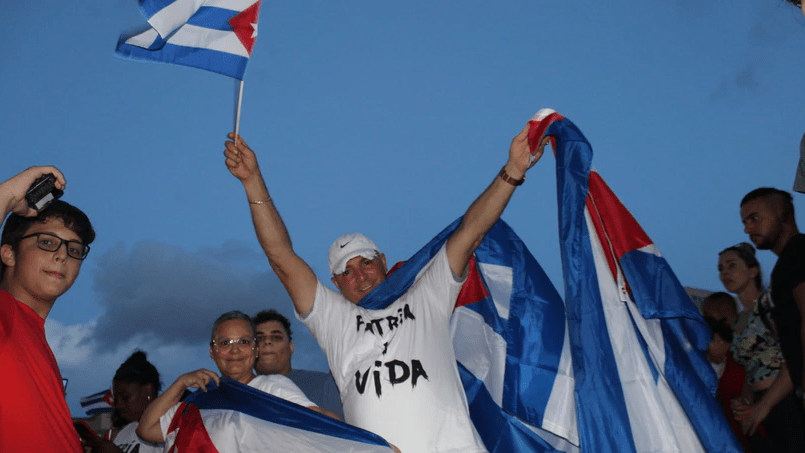
MT: Of course things have changed quite a bit since the day in July when I attended your film screening, but I remember you expressing that if the government would make some certain concessions, you felt that the protests would stop. I don’t know if you’d stand by that now given how things have been unfolding but I’d love to hear you speak on this. I remember one of the things you mentioned was “legalizing cooperatives” which confused me because I thought this was one of the things Raul had done. I think you spoke about the coops in the language of the soviets too, which was interesting. Anyway, maybe you’d speak a bit to the current political and economic conditions?
AN: Do I still feel that if the Party made concessions it would satisfy the masses? Yes and no. Making economic changes would remedy real material problems. However, there appears to be widespread contempt after July 11th. I think the images of state violence are new to Cubans, and it’s a very non violent society. Repairing the social contract will require a bit of cultural/political theater–some sort of a process of making amends and rebuilding trust. I’m not sure if that level of brilliance exists within the Party at this moment in history. Solving the material problems will satisfy the majority like single payer healthcare would do in the United States, but I think the para social relationship that many Cubans once had to the Party is over.
MT: How can people see your film? Where will it be showing and are there other opportunities to see it?
AN: People can contact me at amilcarnavarro.com if they have interest in organizing screenings. I have an online screening lined up for this fall at the Center for Place, Culture and Politics in New York City. You can keep an eye on their schedule or sign up for their newsletter here to know the date and time.
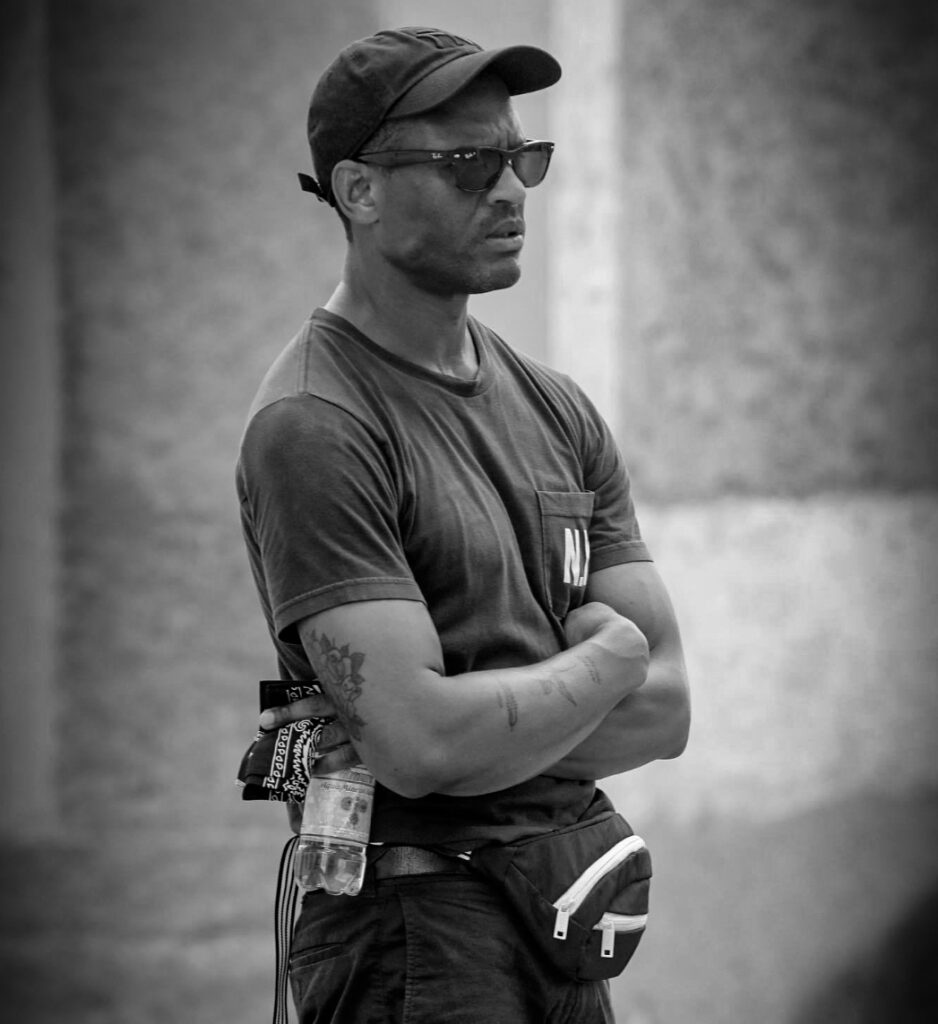
Amilcar Navarro is an NYC/Cuba based Director & DP. His background is unique for this generation of film-workers having only two years of photography school and one year history of photography to his academic background. He began his career in film interning in grip house at age 17. Having moved to NYC in 2001 he began his professional career in commercial art working in photography studios and production for several years before returning to film. His professional film work began with Stephanie Black on Africa Unite, followed by the Oscar-nominated Restrepo as an assistant editor. He currently works in commercial & fashion advertising as a director and dp, while also working on documentary and experimental films. La ENA is his first feature length documentary.
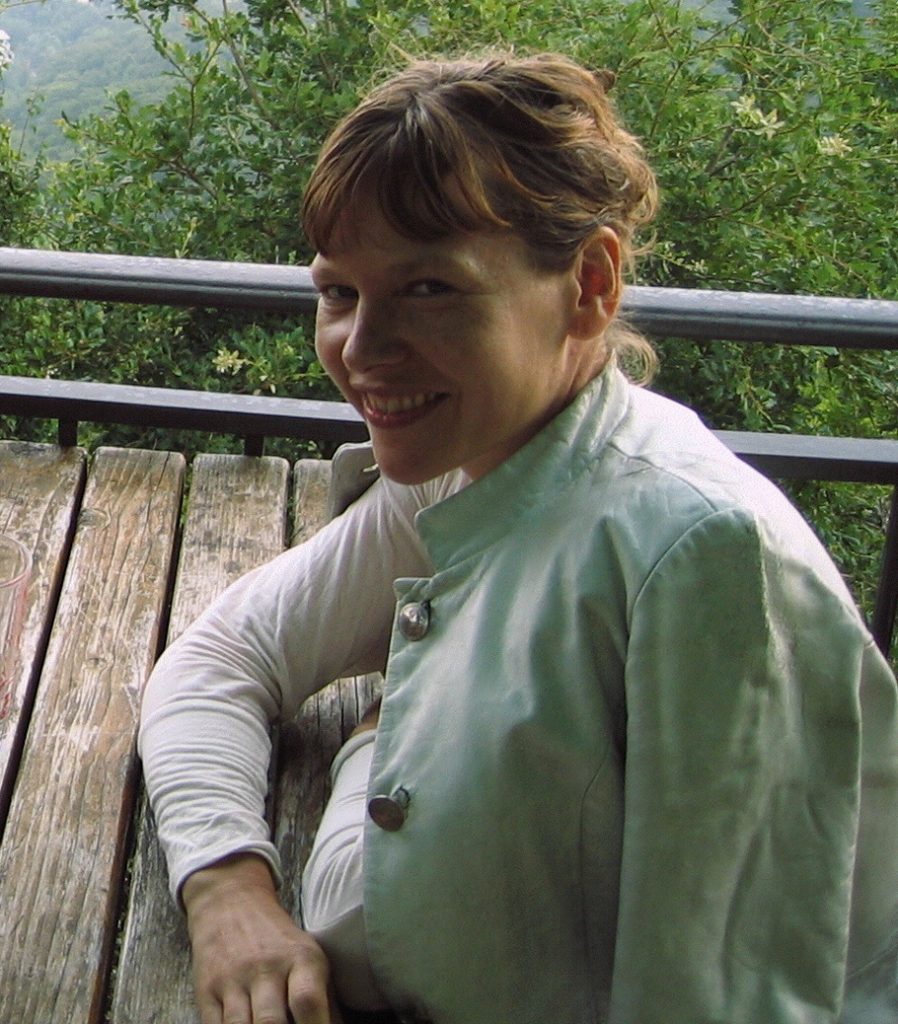
Mary Taylor is Assistant Director at the Center for Place, Culture and Politics, Graduate Center, City University of New York, and a member of the editorial board at LeftEast. Mary received her PhD in anthropology from the Graduate Center of the City University of New York. Her research focuses on sites, technologies and politics of civic cultivation, social movement, and cultural management; the relationship of ethics and aesthetics to nationalism, cultural differentiation, and people’s movements in socialist and post-socialist East-Central Europe and the United States. She specializes in studying, theorizing, and organizing radical and alternative pedagogical activities under different conditions of urbanization.

